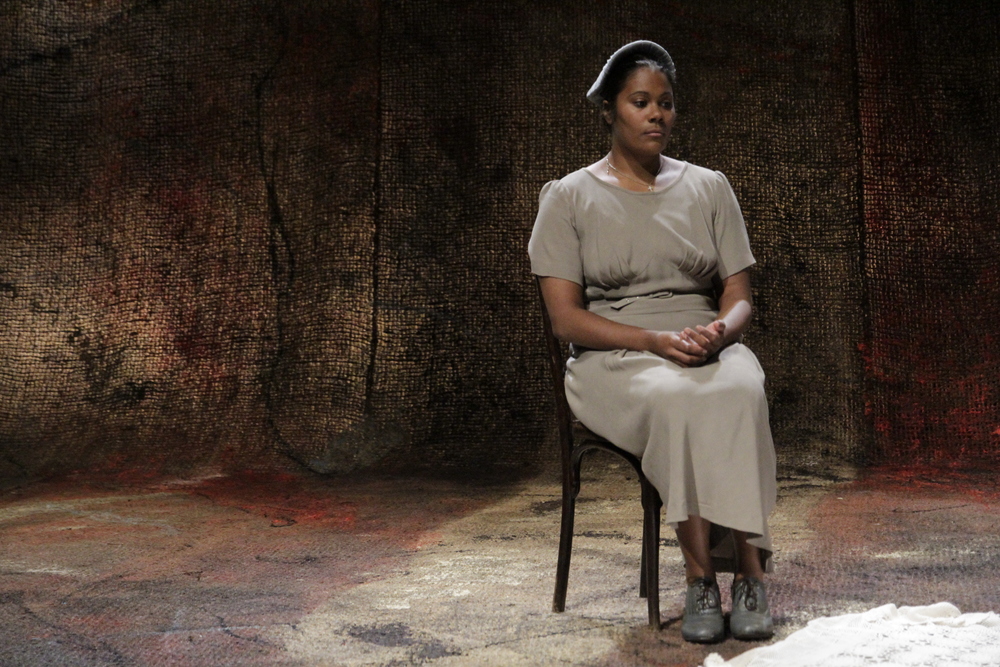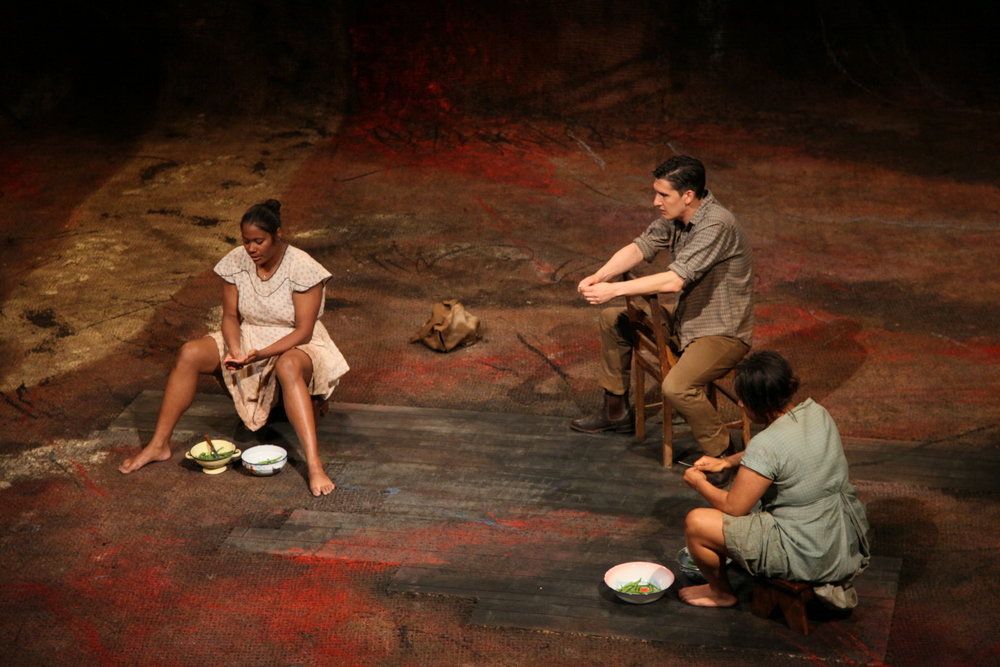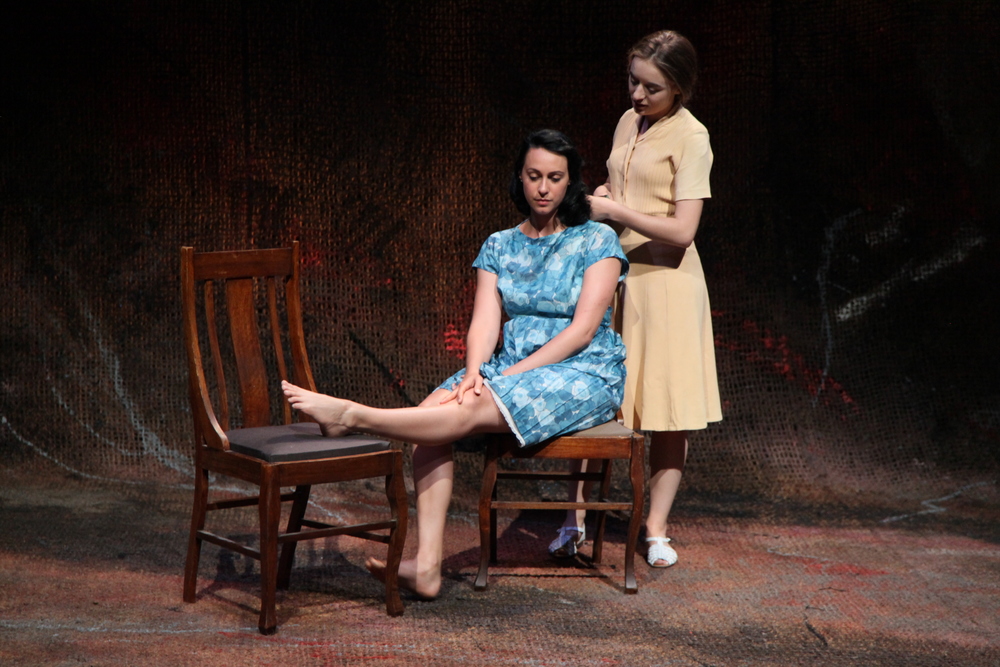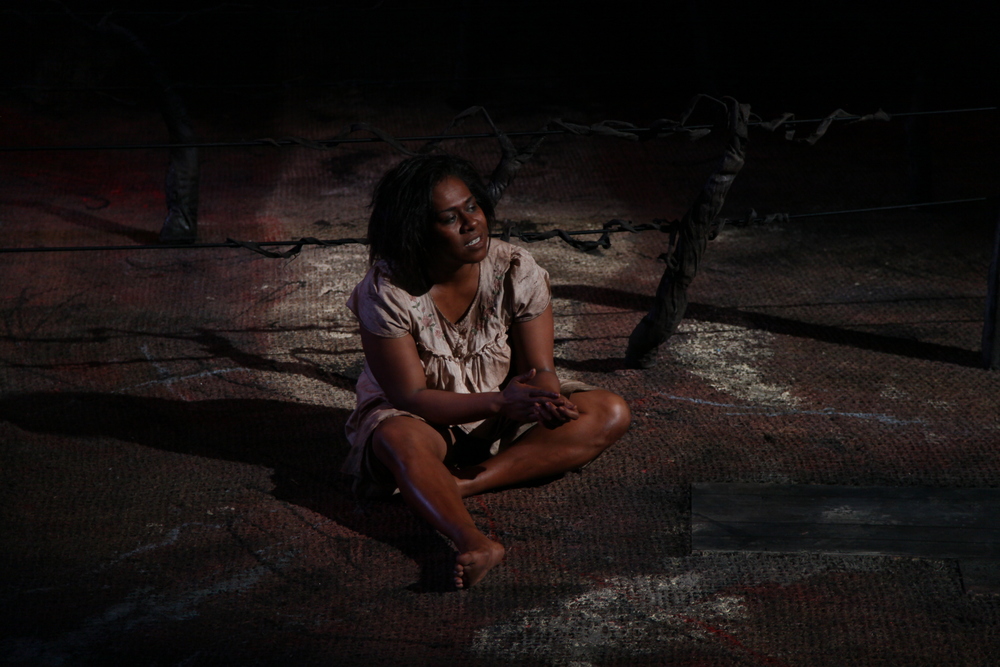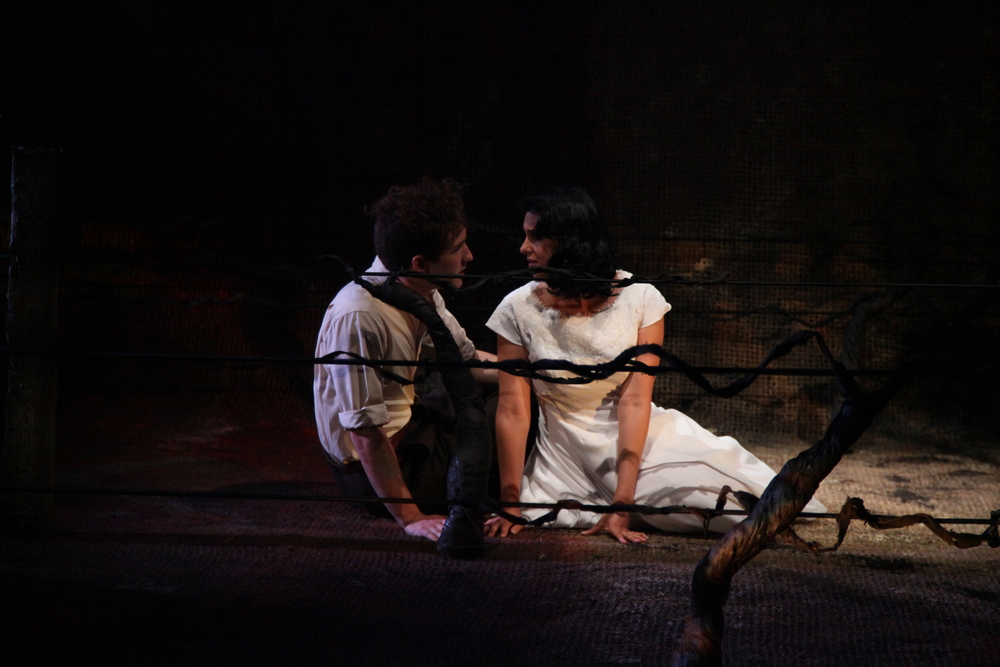October 2014
Public performance by second year students, set in remote Australia looking at relations between aboriginal and anglo Australian in the 1960s. Dramaturg, Dr Liza-Mare Syron.
Why Blood Wedding? Blood Wedding was on my list of plays that I wanted to direct and it was also on the Artistic Planning Committee’s plays for 2014. So that was a match.
What was unique in your vision of this play? The minute I started thinking about Blood Wedding, I knew that I wanted to bring it closer to home. Rural life and the communities that inhabit rural settings is a big theme in Blood Wedding. More importantly in Blood Wedding, the land itself has its own personality, it is epic and this means sometimes the inhabitants can only respond to what the land has to offer. With this in mind, I felt that Australia could be a good place to set the work.
How do you work with the students? When I work with students I look for a context that will have real meaning for them. In their second year of study I like them to be able to draw from themselves so it is not really in my interest to present a Blood Wedding with Australian students setting it in 1930’s Spain, which would feel very far away from students and they would be creating less from themselves and more from something imagined or artificial. So I felt Australia could be a good match .
How did inter and intra-cultural collaboration shift the creative process? (The question that arose from this work) was how could we ignore the relationship between Anglo Australia and the original custodians of the land if we set something in rural Australia? I felt we certainly could not and therefore I set about finding a time period where we could find a believable narrative and context where our work could sit.
It was at this moment that I also knew I had to find an Aboriginal practitioner to work with for the detailed knowledge required to work within an Aboriginal/Anglo context. I did some research and met Liza Mare Syron. Liza Mare became dramaturg and consultant. She led in terms of finding the particular narrative and brought with her the knowledge that many Italians immigrated in the 60’s and married Aboriginal women or men. Aboriginal men had gone to war, came back and were not afforded the same respect as they received on the battlefield. Many people had been part of the stolen generation and this was something that played itself out in our version of Blood Wedding where the Mother was suffering a double loss with the death of her first son. There were many resonances and Liza Mare found and evidenced the narrative and then worked with meaning and nuance of the situation with us in the rehearsal room.
Reflection 1
The setting brought the production literally closer to home. The contextual information was passed on early in the process, shedding light on the geographical and social details of Griffith NSW particularly the Aboriginal peoples relationship with that land. As an artist I found this incredibly useful in terms of opening many questions about how I would work in this type of project in a sophisticated and respectful way; respectful to stakeholders and the story.
The research article given to us at the start of rehearsals covering multiple different views around the politics of representation was very important to me, mostly for the fact it created a dialogue early on that there isn’t really any ‘right or wrong’ in this situation : more the point was that the most important thing is that there is discussion with artists and stakeholders about the stories and what they mean to all involved and how they can be told.
Having academic and practitioner Liza-Mare Syron in the room with us from day one helped to answer questions around who we are representing in the story and the politics surround such representation. With Liza-Mare’s wealth of knowledge in Aboriginal culture I felt confident to ask questions . This working relationship has led me to believe that collaborating with Aboriginal artists should not be shied away from just because of an initial lack of knowledge. In future I hope to pursue works of this nature, with these sort of working relationships which enrich my practice as an actor but also enrich my experience as an Australian.
Using my cultural context means my experiences to date, spanning my entire life and utilizing as many reference points that I’ve experienced. Particularly the individual uniqueness of each experience. By this I mean rather than viewing each experience as something generic and that “happens to everybody”, thereby removing the experience from yourself, I learned to view my history and relationship to my life events as unique to me and I was able to resist the urge to re-shape them to fit what might be accepted as ‘normal’. I was playing “ the husband”. My femininity is something that has been a part of my identity since I could walk and talk. As a child I would dress up in girls clothing and play for hours creating characters and scenarios. Doing a lip sync exercise wearing lipstick and lipsynching as a drag artist taught me that I could draw on this experience as a child playing in order to locate and harness a “unique fizz” totally necessary for performing with pleasure and truth. To me this is so potent because it is flowing un-inhibited through the doors of my unique individual context.
This way of working has challenged the conventional way I viewed, or perhaps was taught to view theatre. It showed me that the sort of theatre I seek to enjoy and create is not rigid or exclusive, rather it is open and inclusive. Through this inclusiveness we are challenged to lean in and invest in the humans and their stories which is simultaneously an investment in ourselves.
Reflection 2
‘Bringing yourself’ is not necessarily the right phrase for the kind of work we do with Kristine. It could imply that we are bringing something else, something other to the work itself, which I don’t believe to be true. This kind of art in its whole is defined by the creator, meaning that the self is not an addition; it is an integral part of the work’s existence. To me, it seems more appropriate to say that we are eliminating those inhibitions which make us try to be other than self. There is no need to ‘bring’ yourself. Yourself is already there. The work exists in freeing ourselves from fears that make us ‘perform’ or hide behind façades that arise from the need to be good or to impress. When this freedom happens, we see the fundamental of theatre; the art of humanness. The self appears with all its truth and joy: ultimately watchable humanity. This involves a deep appreciation for one’s own idiosyncrasies and, importantly, a trust of, and joy in sharing with the audience.
Culture in this framework is broader than its common connotations would permit. Upon hearing the word culture, many assume ethnicity, religion, artistic temperament etc. For our work I think it useful (perhaps necessary) to see culture as a collection of all these things that influence our personalities. Each person’s culture is something unique to them and it revolves around every experience they’ve ever had from the start of life to their present circumstances and in their dreams of the future. In this sense, one’s cultural context is a continuously growing, changing force. Cultural context is the context of you as a person across all experiences that go towards being uniquely human. This uniqueness is the watchable texture that exudes from an actor who ‘brings him/herself’ to the work.
Reflection 3
To be honest at first I was a bit apprehensive of bringing my cultural context to the work because being Aboriginal in this industry, especially in Australia I am nervous of being automatically stereotyped as “Aboriginal Woman” and that in itself automatically is a fear: it’s a license for people in the industry to believe that “Aboriginal woman” with attached stereotypes isall you are capable of.
So when rehearsals started I put on the stereotypical blackfella voice but it wasn’t me: I was putting on a mask out of fear of being judged … let’s face it the majority of the Australian audience like to feel safe when it comes to watching black people on stage … we still have a way to go to educate society when it comes to Aboriginal people. We are not drunks and we all don’t sit under trees or on the streets being violent, and we definitely don’t all talk like we come from the outback, but when people hear the word Aboriginal it is automatically stereotyped.
After having a detailed conversation with the Director and dramaturge about my fears they both helped me to realize it was just me Shakira Clanton who happens to be aboriginal telling my story of grief : I didn’t have to do anything or put any layers on, except be myself in the situation that was part of the script and have the pleasure to play with my fellow actors. We don’t do enough of these plays in Australia … how many “black” faces do you see on Australian TV?
Being able to bring a part of me into the rehearsal room and my culture once I allowed the fear of judgment to pass, was a breath of fresh air. Being able to share and tell my ancestor’s stories: my grandmothers, my mothers and my own experience in a safe environment in the rehearsal room and on stage was a key part for me and my journey of helping unlock my true self and my capabilities as an actor . I was told by many that Blood Wedding was my strongest performance but to me I was just being myself, Shakira Clanton the actor who happens to be Australian Aboriginal, African American and Native American Indian.
